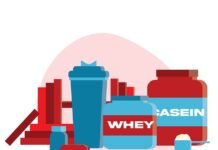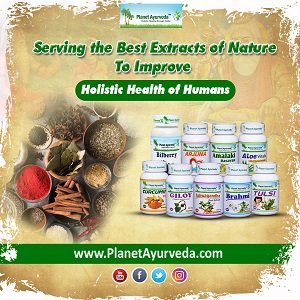Introduction
Milk powder is a widely used dairy product with applications in various industries, including food processing, bakery, confectionery, and infant nutrition. Proper packaging is essential to maintain the quality, freshness, and shelf life of milk powder while preventing contamination and deterioration caused by environmental factors.
Importance of Packaging in Milk Powder
Milk powder is a widely used dairy product with a very low moisture content of approximately 4–5%, making it hygroscopic in nature. This means it has a high tendency to absorb moisture, which can lead to stickiness and lump formation, significantly shortening its shelf life. Therefore, using water-vapor-resistant packaging materials is essential to maintain product quality and extend shelf life.
Packaging plays a crucial role in preserving the nutritional value and sensory properties of milk powder. Since milk powder is highly hygroscopic, exposure to moisture can lead to clumping and microbial growth, reducing its usability and safety. Additionally, protection against light, oxygen, and physical damage ensures that the product retains its intended quality throughout its shelf life.
Common Packaging Materials
Several materials are used in the packaging of milk powders, each offering specific advantages:
Multi-layer Paper Bags – Commonly used for bulk packaging, these bags provide strength, durability, and limited moisture protection. They are often lined with polyethylene to enhance barrier properties.
Aluminum Foil Laminates – These offer excellent barrier protection against moisture, oxygen, and light, ensuring prolonged shelf life.
Plastic Pouches (LDPE, HDPE, PP) – Used for retail packaging, these materials provide lightweight, cost-effective, and moisture-resistant solutions.
Metal Cans – Commonly used for infant formula and premium milk powders, metal cans provide superior protection from external factors and enhance product safety.
Flexible Stand-up Pouches – Increasingly popular due to their convenience and resealability, these pouches enhance usability and minimize product exposure to air and moisture.
Factors Affecting the Selection of Packaging Material
Several factors must be considered when selecting the appropriate packaging material for milk powder:
Hygroscopicity – High moisture absorption tendency
Cohesivity – Tendency to form lumps
Sensitivity – Susceptibility to oxygen, light, and heat
Bulk Density – Affects storage and transportation efficiency
Odor Picking Tendency – Ability to absorb external odors
Bacterial Aspects – Protection against microbial contamination
Packaging Design Considerations
Barrier Properties – Effective moisture, oxygen, and light barriers are crucial for extending shelf life.
Seal Integrity – Proper sealing ensures that the product remains uncontaminated during storage and transportation.
Sustainability – The use of recyclable and biodegradable materials is gaining importance to reduce environmental impact.
Consumer Convenience – Features such as resealable zippers and easy-to-open designs enhance user experience.
Regulatory Compliance – Packaging must adhere to food safety regulations.
Types of Packaging Materials
Milk powder packaging is broadly classified into two main types:
- Metal Packaging
Typically, tin-coated steel cans are used
Offers excellent barrier properties against moisture, light, and oxygen
Durable, hard, and available in various sizes for retail use
- Composite Soft Packaging Material
- Bulk Packaging: Sacks
The most adaptable storage method for large-scale commercial use
Material: Polyethylene-lined multi-layered paper sacks
- Retail Packaging
Flexible Packaging Materials
Cartons lined with Al-foil-PE: Bag-in-box type (coated Al-PE bag or plastic-coated paper inside cartons)
Laminates: Combinations of paper, PE, foil, metallized BOPP/PE, or PET
Kraft paper with/without PE lining
Poly-films: Common combinations include PET/PE/Al-foil/PE
HDPE bottles/bags: Mainly for skim milk powder
Metal Cans
Tin-coated steel cans or other metal cans
Advantages:
Available in various sizes
Durable and ideal for retail use
Provides the best protection against moisture, light, and oxygen
Packaging Machines
To ensure efficient and precise packaging, different machines are used in the milk powder industry:
- Sack Filling Machine
Ensures accuracy, speed, and reliability in bulk packaging
Used for filling bags or containers
Streamlines large-scale industrial packaging processes
- Can Filling Machine
Features adjustable filling heads for flexibility
Accurately dispenses and seals milk powder
Can fill a wide range of can sizes
- Pouch Filling Machine
Uses form-fill-seal technology in combination with supporting equipment
Highly versatile and efficient for industrial packaging
- Inline Bag-in-Box Filling Machine
Fully automated high-speed filling line
Uses single-head, modular, and scalable systems
Ideal for large-scale production of bag-in-box type packaging
Dairy supplier Hiroland uses three-layer polyethylene bags with heat-sealing to prevent the absorption of moisture, light, and oxygen when packaging its powdered milk. This type of packaging is highly effective in preserving the quality and freshness of the milk powder during storage.
To ensure maximum protection, the inner layer consists of a separate plastic bag that acts as a moisture barrier. A secure seal ensures the bag remains tightly closed, preventing any moisture penetration. The outer layer, made of kraft paper and polyethylene, blocks light and oxygen while also providing resistance to weight and impact. Additionally, this outer layer is separately sewn to enhance durability.
Conclusion
The packaging of milk powder is a critical factor in maintaining its quality and safety. The selection of an appropriate packaging material and method plays a crucial role in maintaining the quality of milk powder. Given its hygroscopic nature, the use of moisture-resistant, oxygen-barrier, and light-protective materials is essential. Bulk packaging and retail packaging ensure that the product remains fresh, safe, and suitable for both industrial and consumer use. Additionally, using advanced packaging machines enhances efficiency, accuracy, and cost-effectiveness in milk powder production and distribution. As sustainability becomes a key focus, the industry is shifting towards eco-friendly packaging solutions to minimize environmental impact while maintaining product integrity.


























